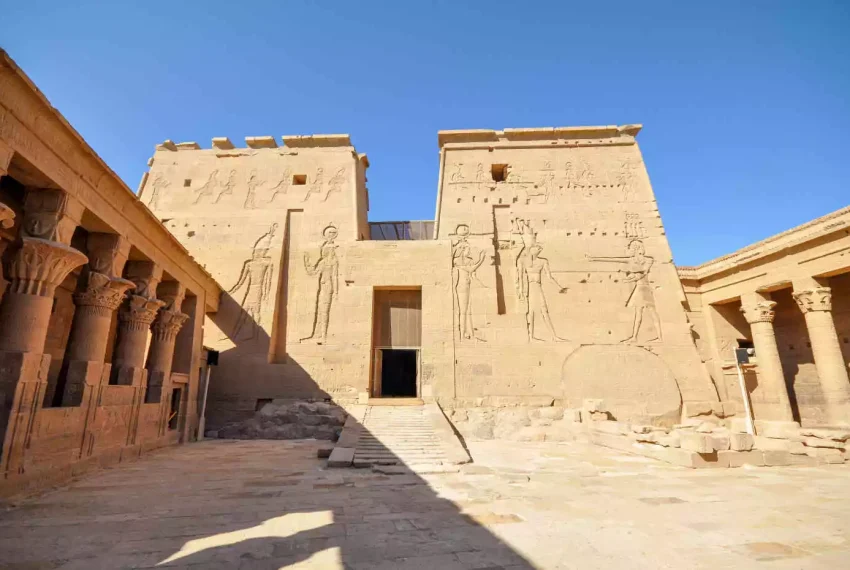The astounding architectural accomplishments of the ancient Egyptians continue to amaze and inspire us today. The ancient Egyptians left behind a lasting legacy that still attracts people from all around the world, from the majestic pyramids to the soaring temples. We’ll look into the background and characteristics of ancient Egyptian architecture in this blog.
The Predynastic era, which started approximately 6000 BCE, is when the earliest known examples of ancient Egyptian architecture were created. For habitation and storage during this time, the Egyptians used straightforward mud-brick constructions. The advanced building methods and designs that are associated with ancient Egyptian architecture were first developed by the Egyptians during the Old Kingdom period (about 2686–2181 BCE).

The pyramid is among the most recognizable examples of ancient Egyptian construction. To ensure that their pharaohs would have a secure place to rest in the hereafter, the Egyptians erected these enormous constructions as tombs for them. Large chunks of transported and mined limestone and granite were used to construct the pyramids. The Great Pyramid of Giza, the Pyramid of Khafre, and the Pyramid of Menkaure are some of the most well-known pyramids.
The building of temples was another great accomplishment of ancient Egyptian architecture. These impressive buildings, which were decorated with exquisite carvings, paintings, and sculptures, functioned as centers of worship and ritual. Massive stone blocks were used to construct the temples, and papyrus and lotus designs were frequently used to embellish the columns and pillars. The Temple of Karnak, the Temple of Luxor, and the Temple of Abu Simbel are a few of the most well-known temples.
For practical purposes, the ancient Egyptians also created amazing residences, shops, and office buildings. These buildings were made of sun-dried mud bricks, and colourful wall murals and reliefs were frequently used as decorations. In order to irrigate their crops and supply water to their towns, the Egyptians developed amazing irrigation systems, canals, and aqueducts.

The employment of symbolic and religious imagery in ancient Egyptian architecture is among its most outstanding characteristics. The majority of the buildings were constructed to line up with the positions of the sun and stars, and they were typically decorated with motifs from Egyptian religion and mythology. The Egyptians considered their constructions to be both physical structures and spiritual places.
In conclusion, ancient Egyptian architecture represents evidence of one of the most outstanding civilizations in history, as well as its inventiveness, skill, and originality. The ancient Egyptians left behind a remarkable legacy that continues to astound us even today, from the majestic pyramids to the exquisite temples. Their architectural accomplishments serve as a reminder of the enduring strength and beauty of human creativity and continue to inspire architects, artists, and historians all over the world.